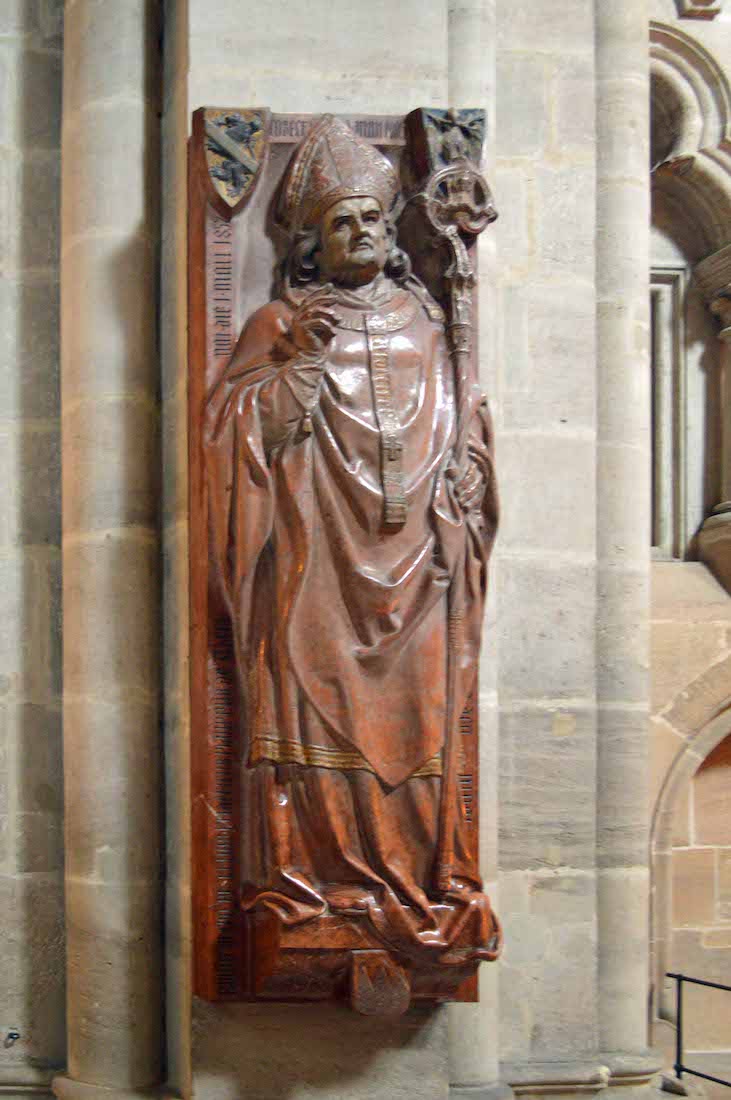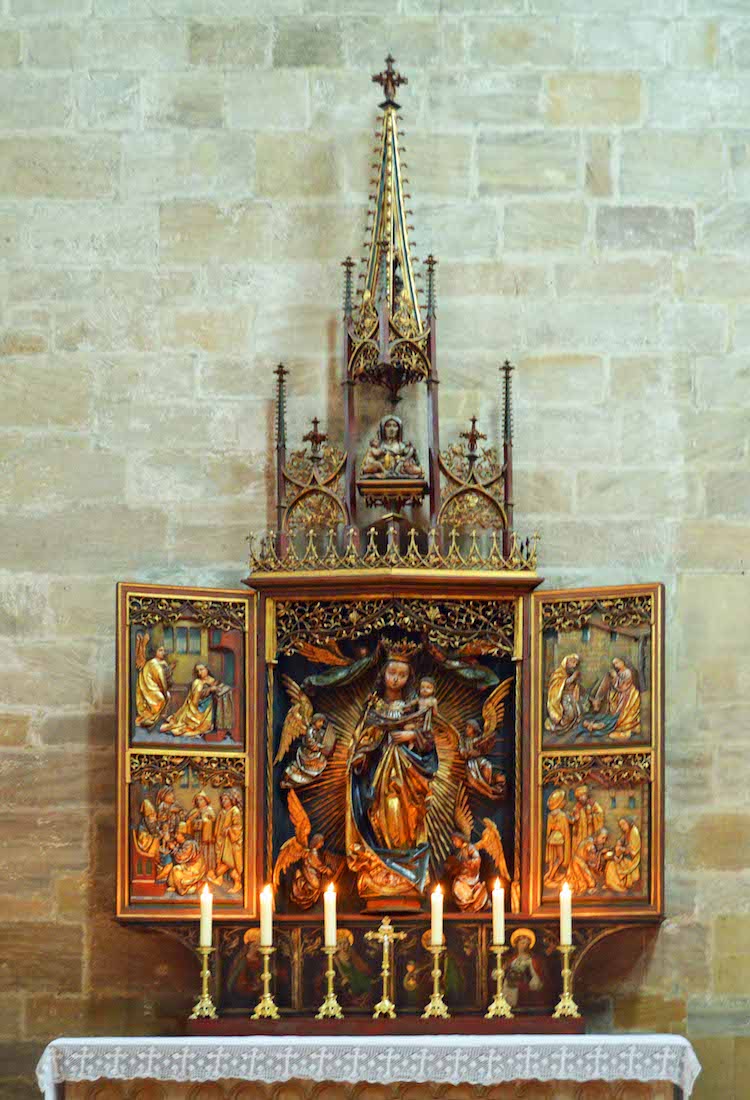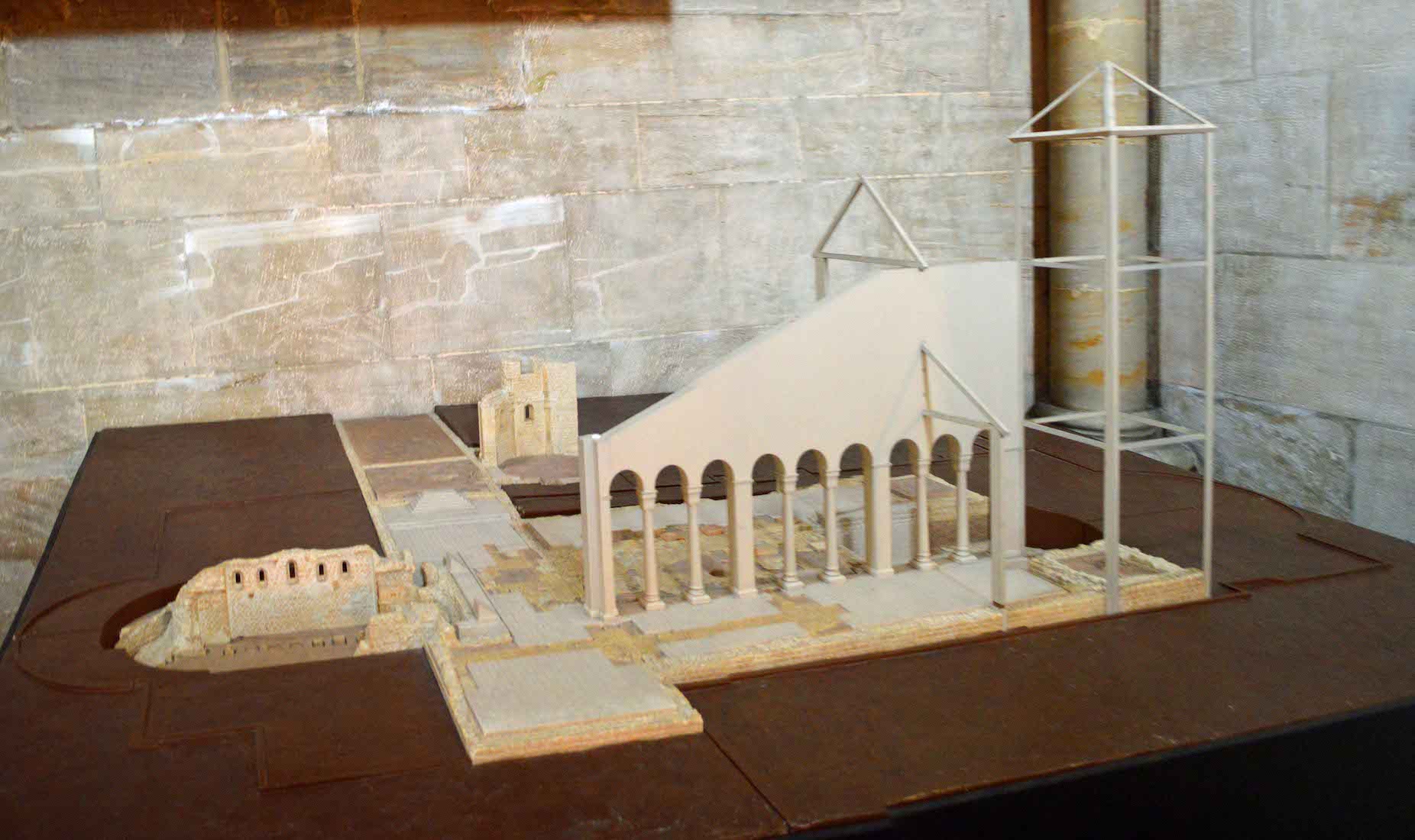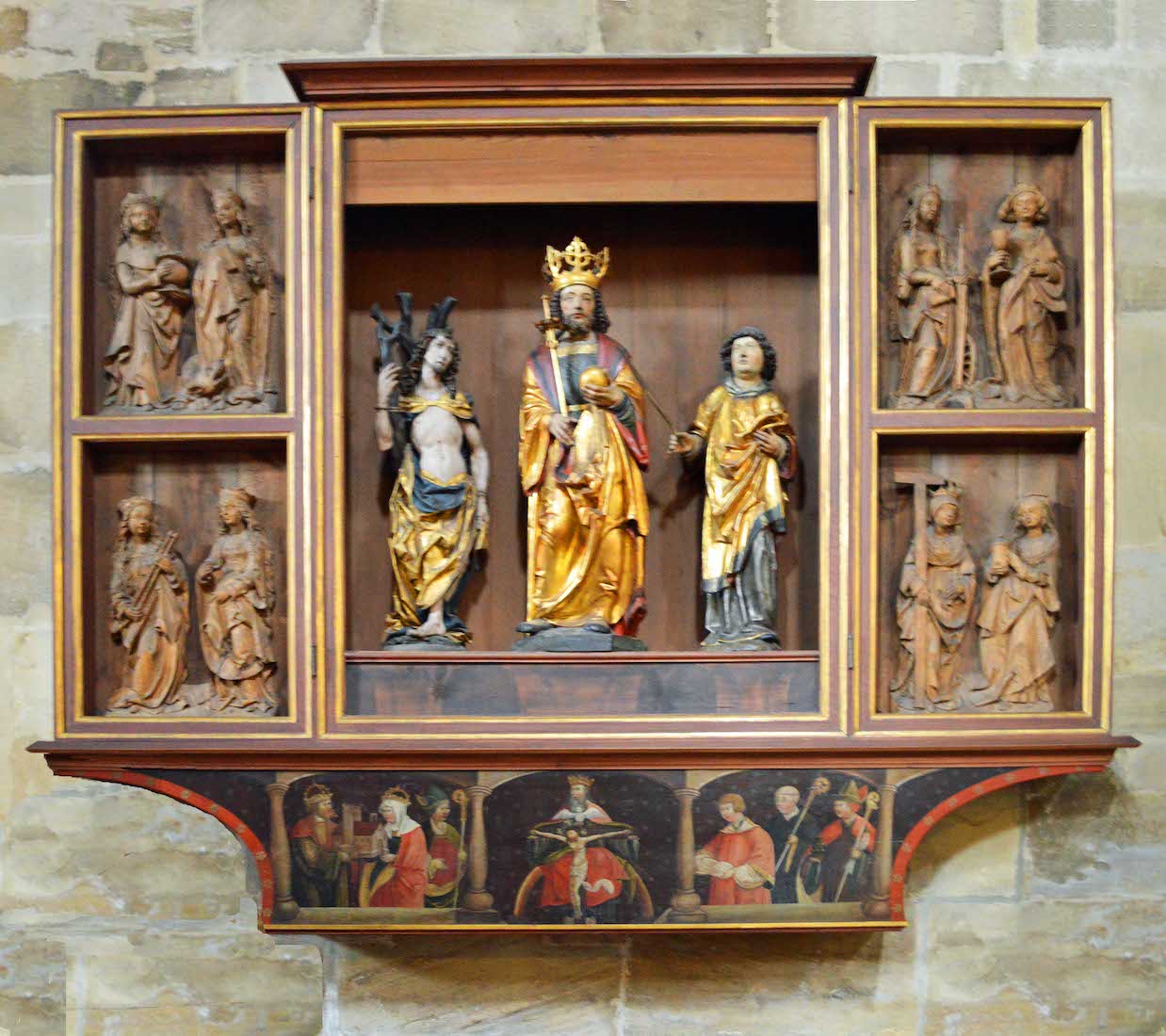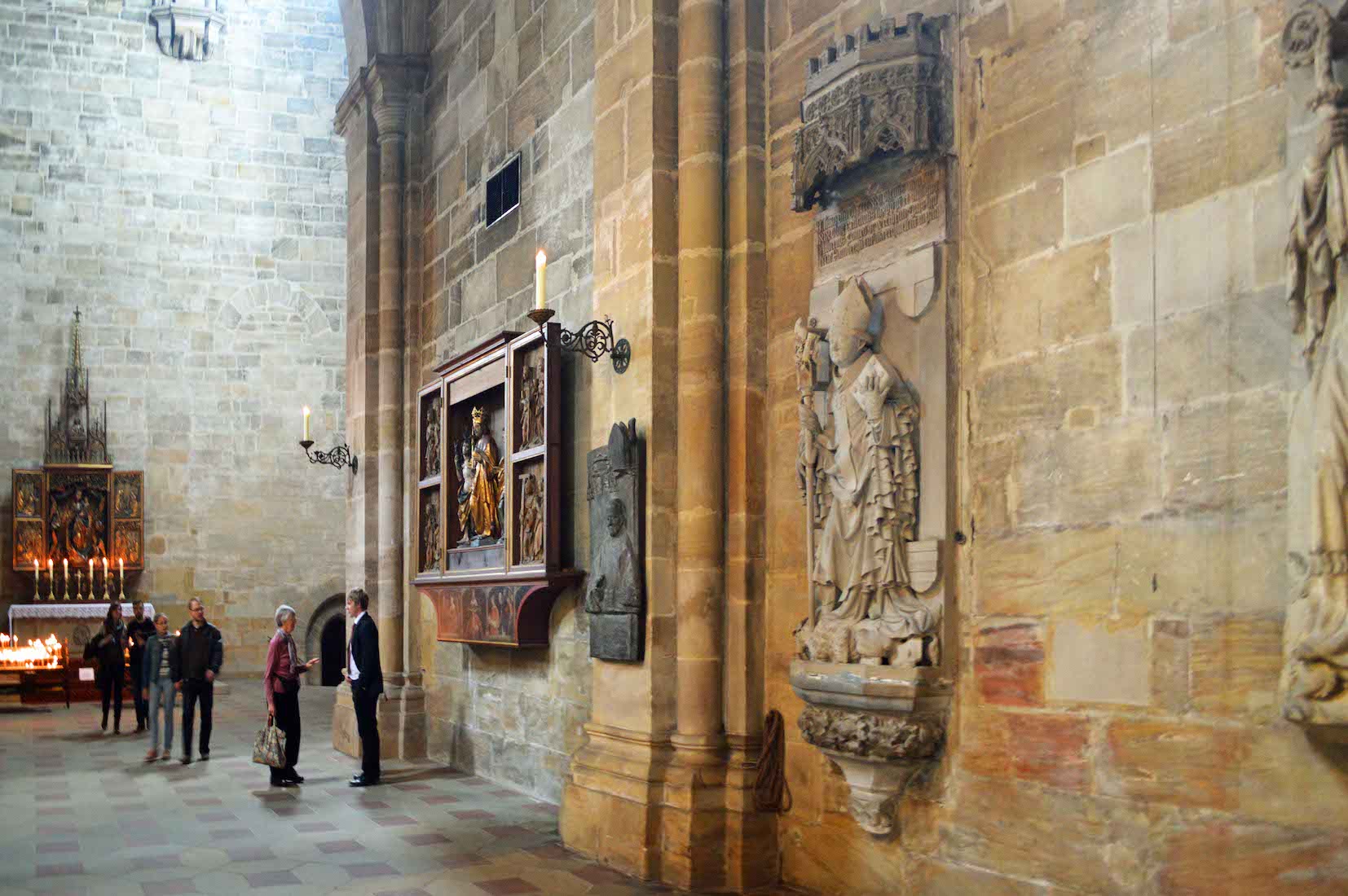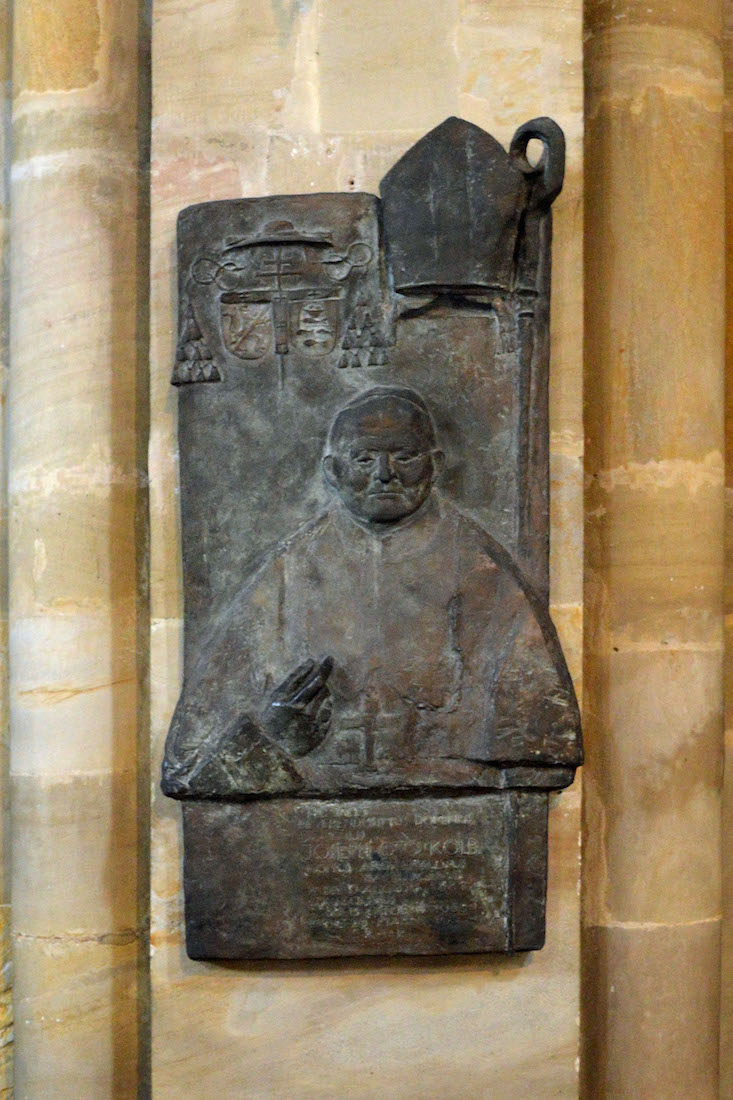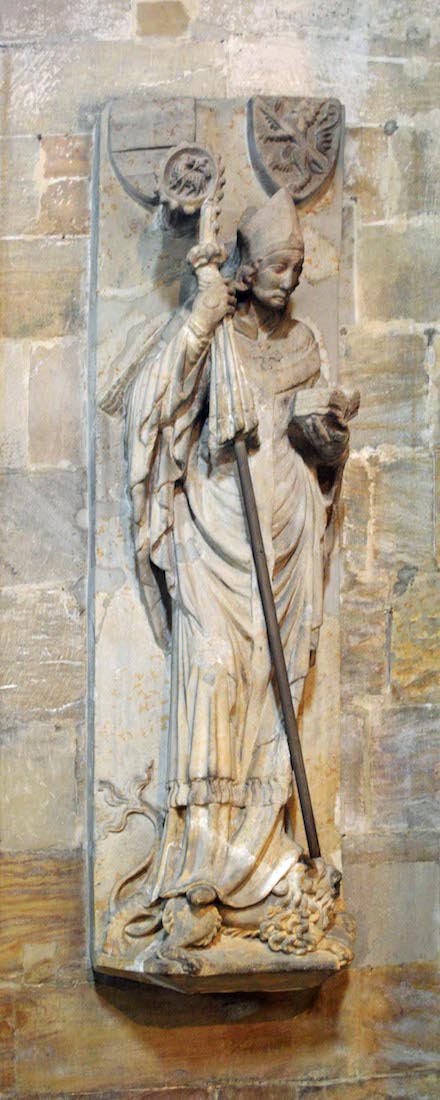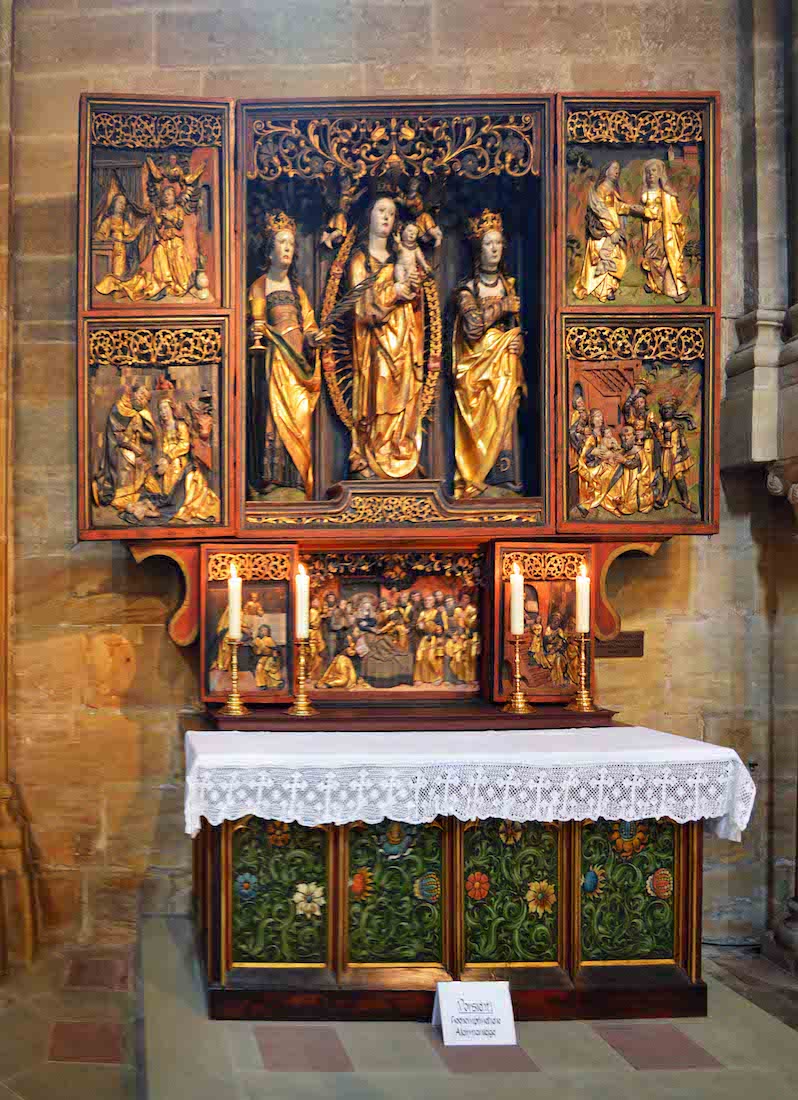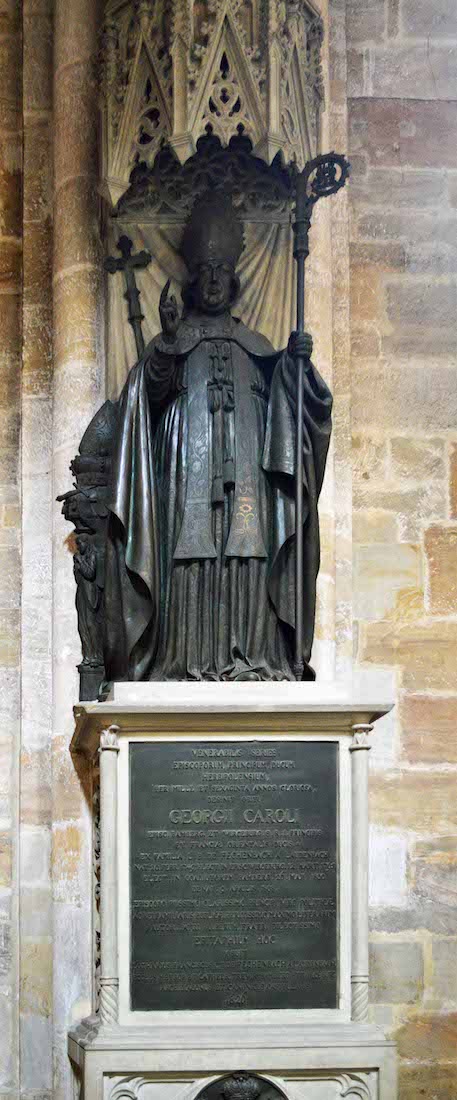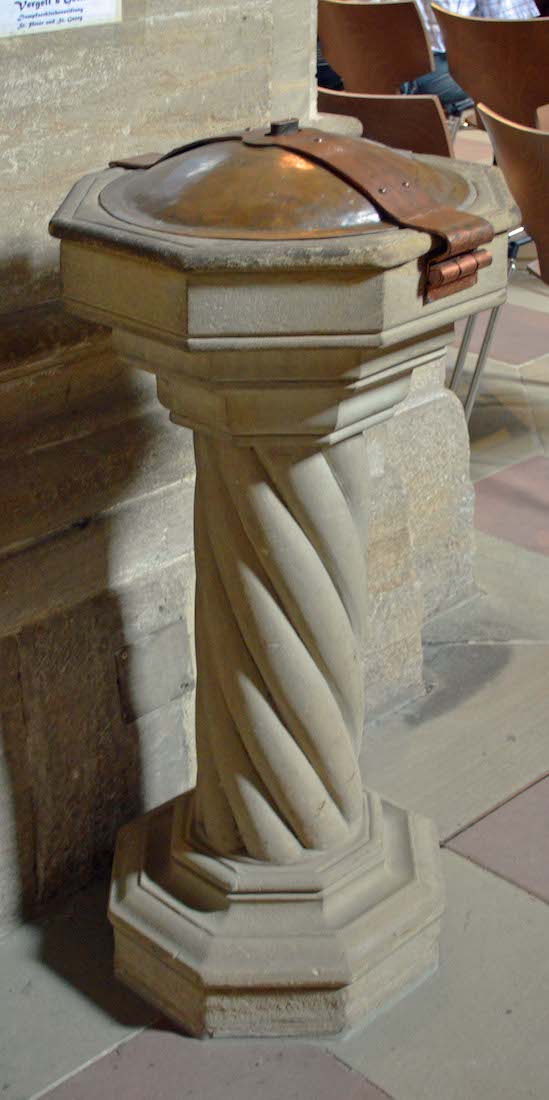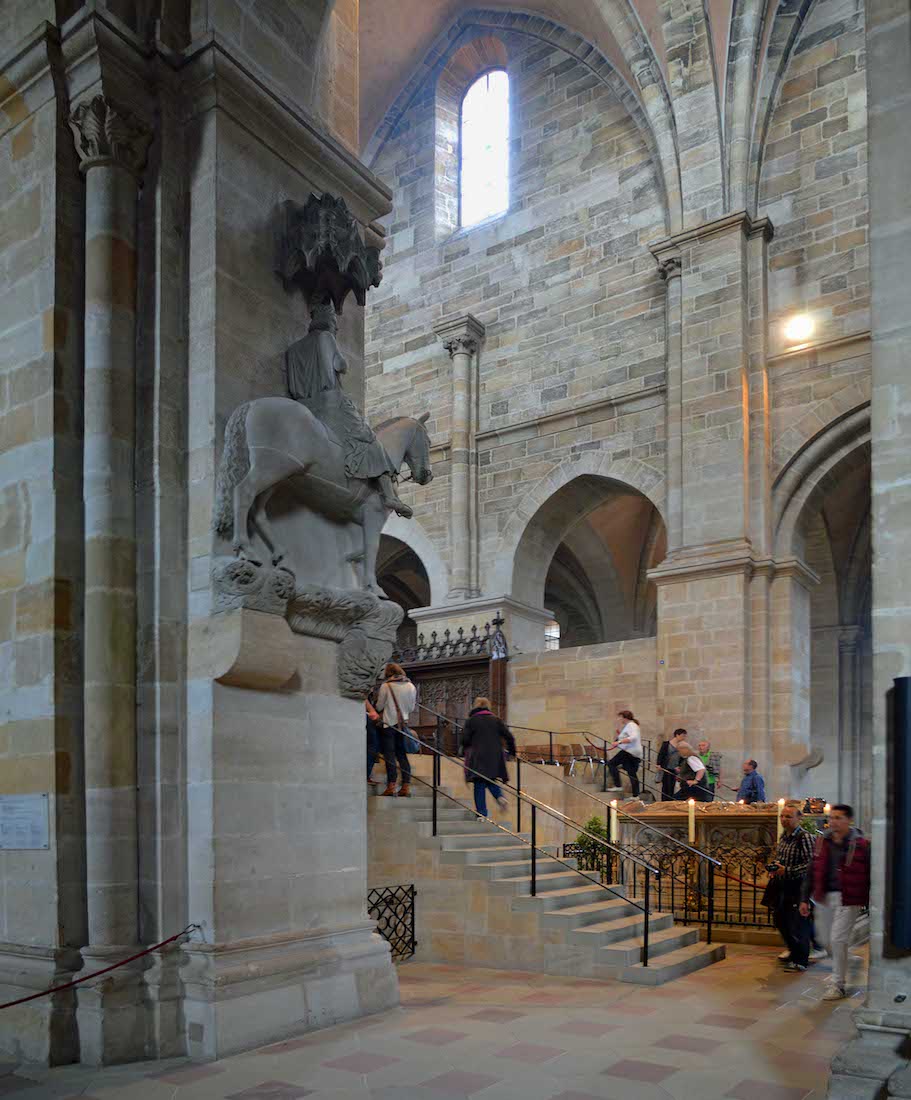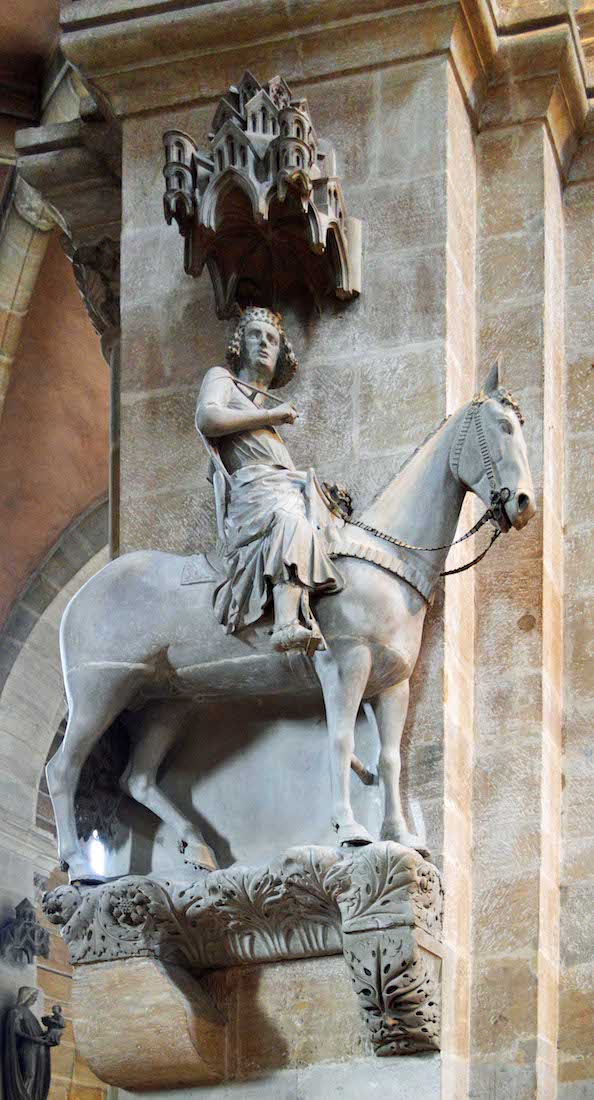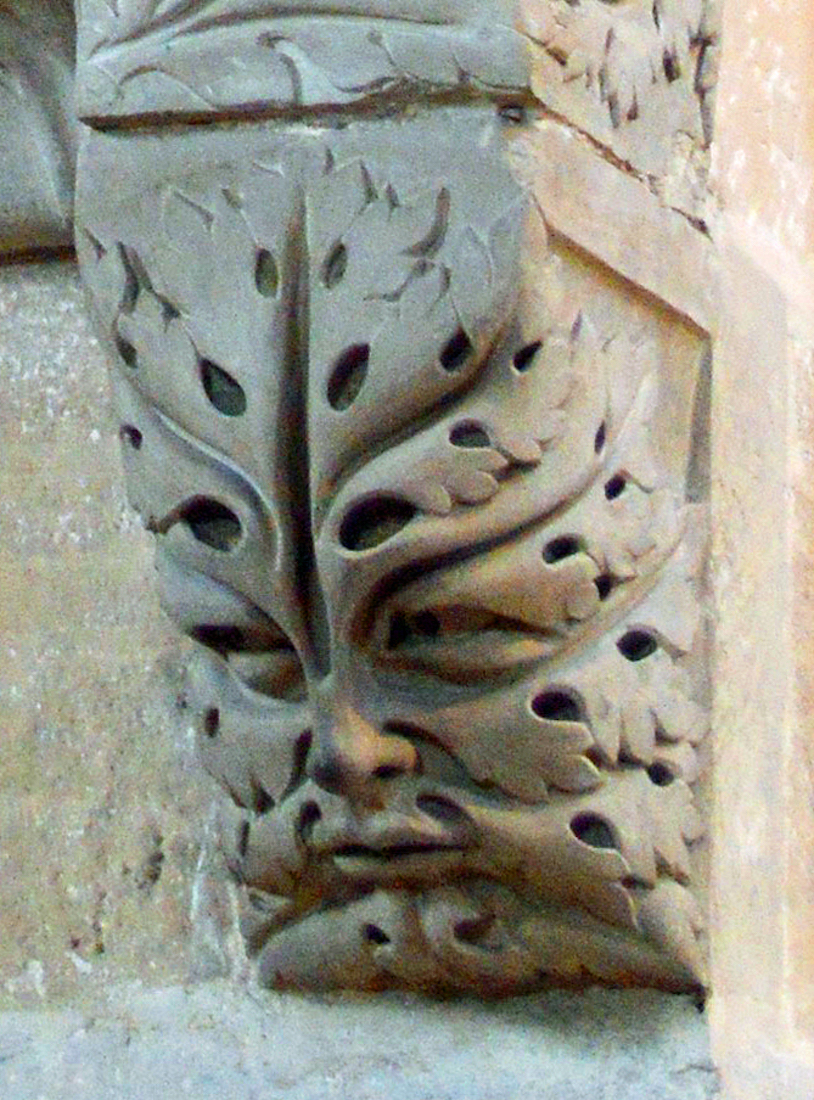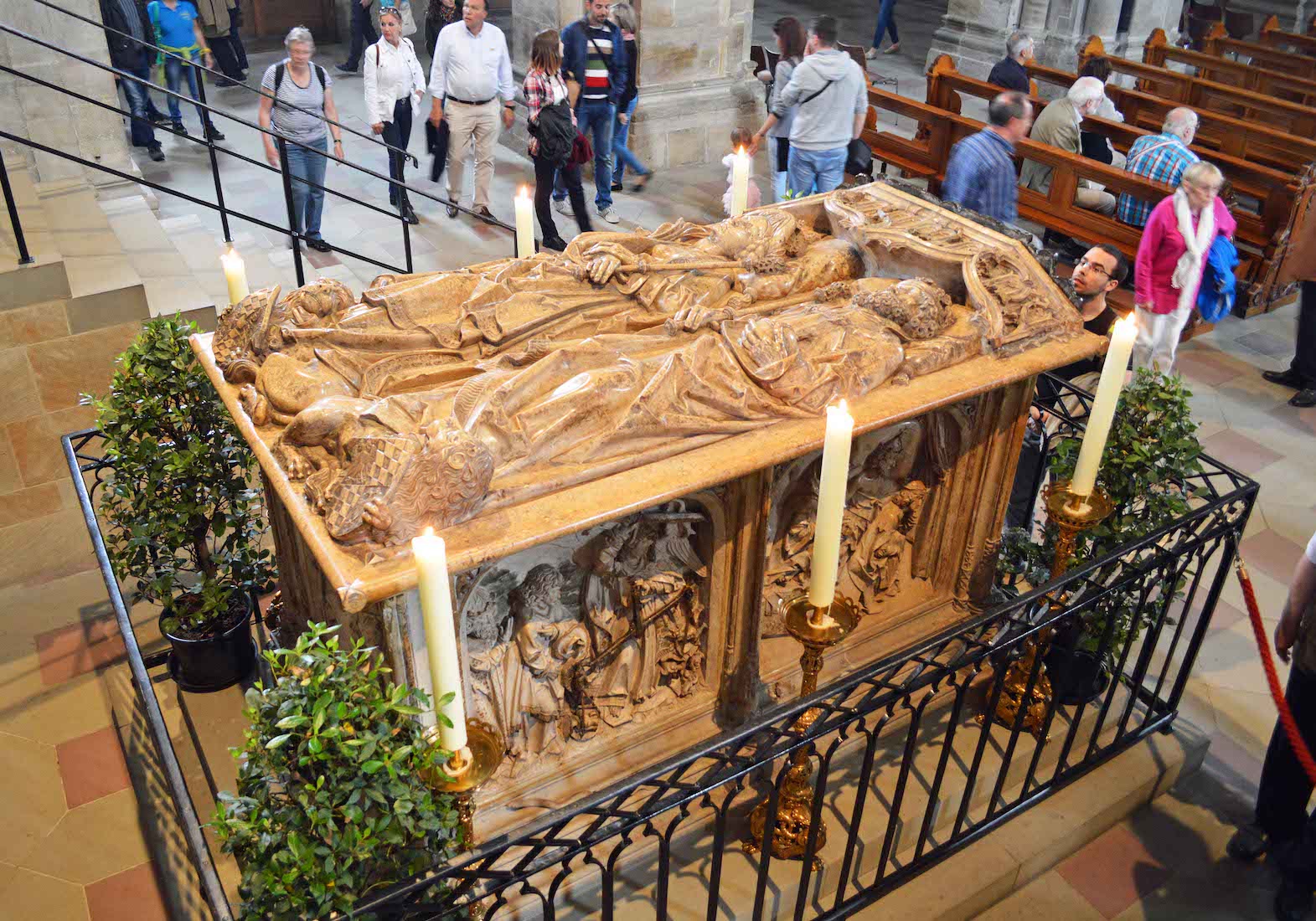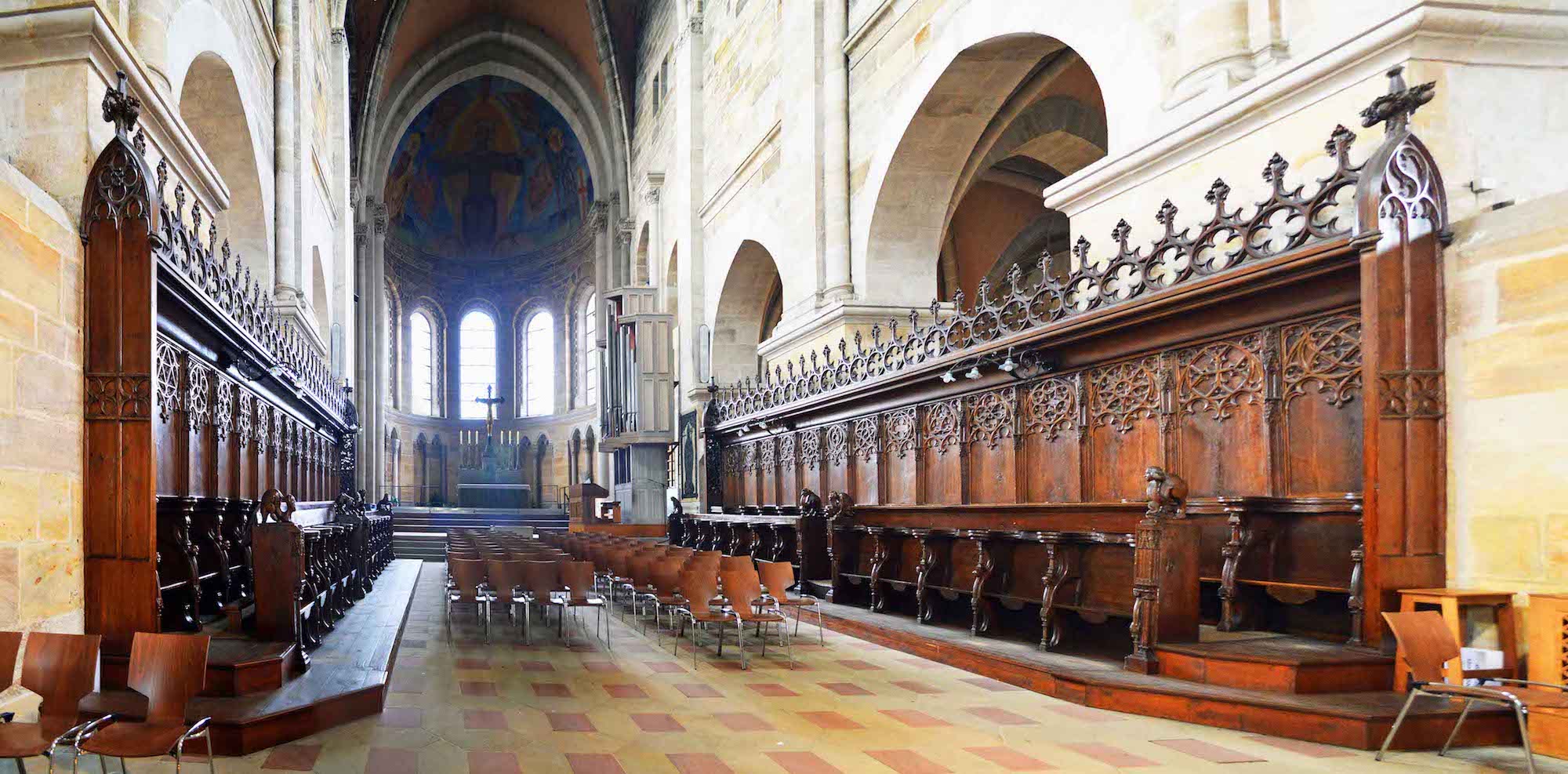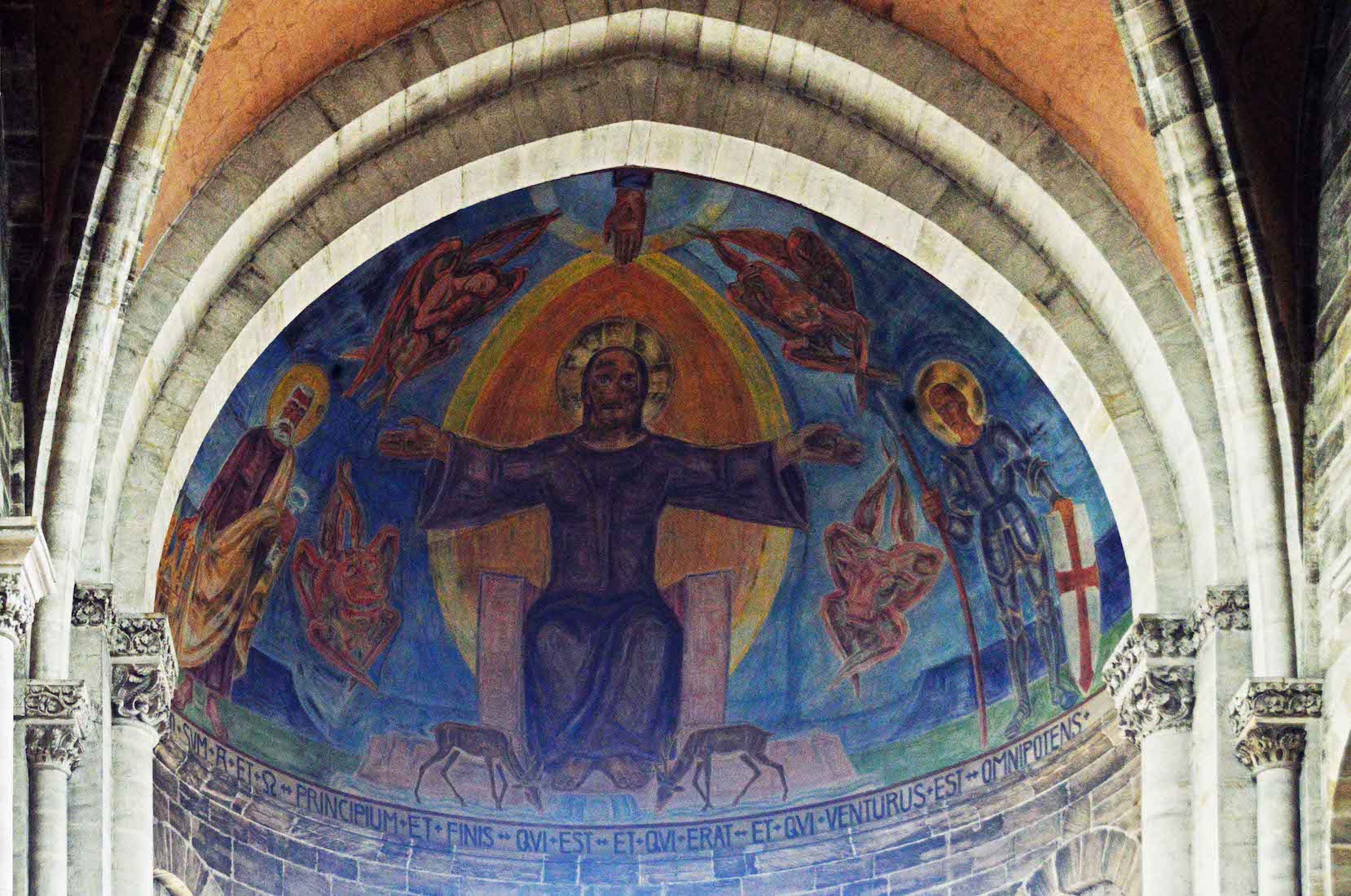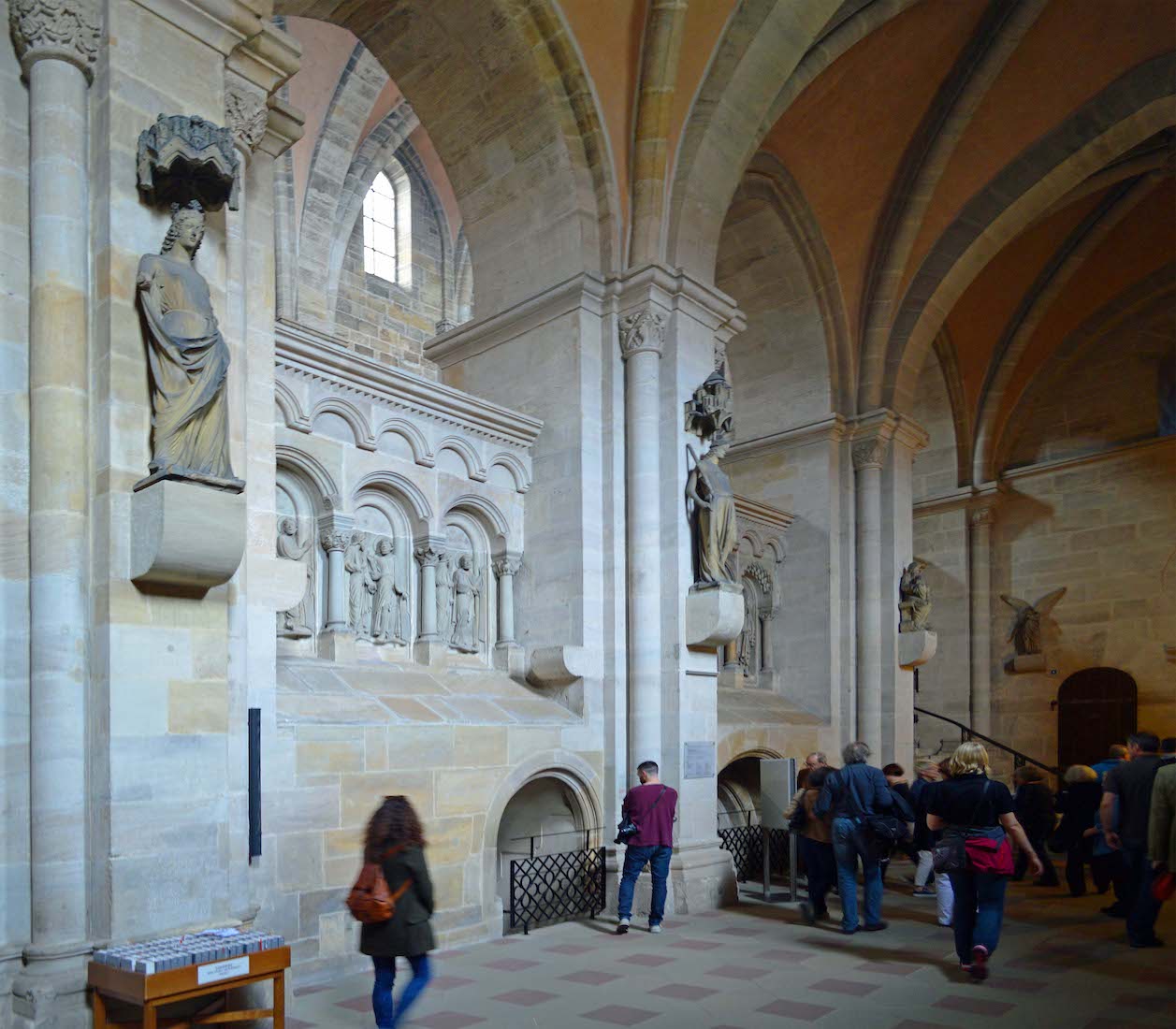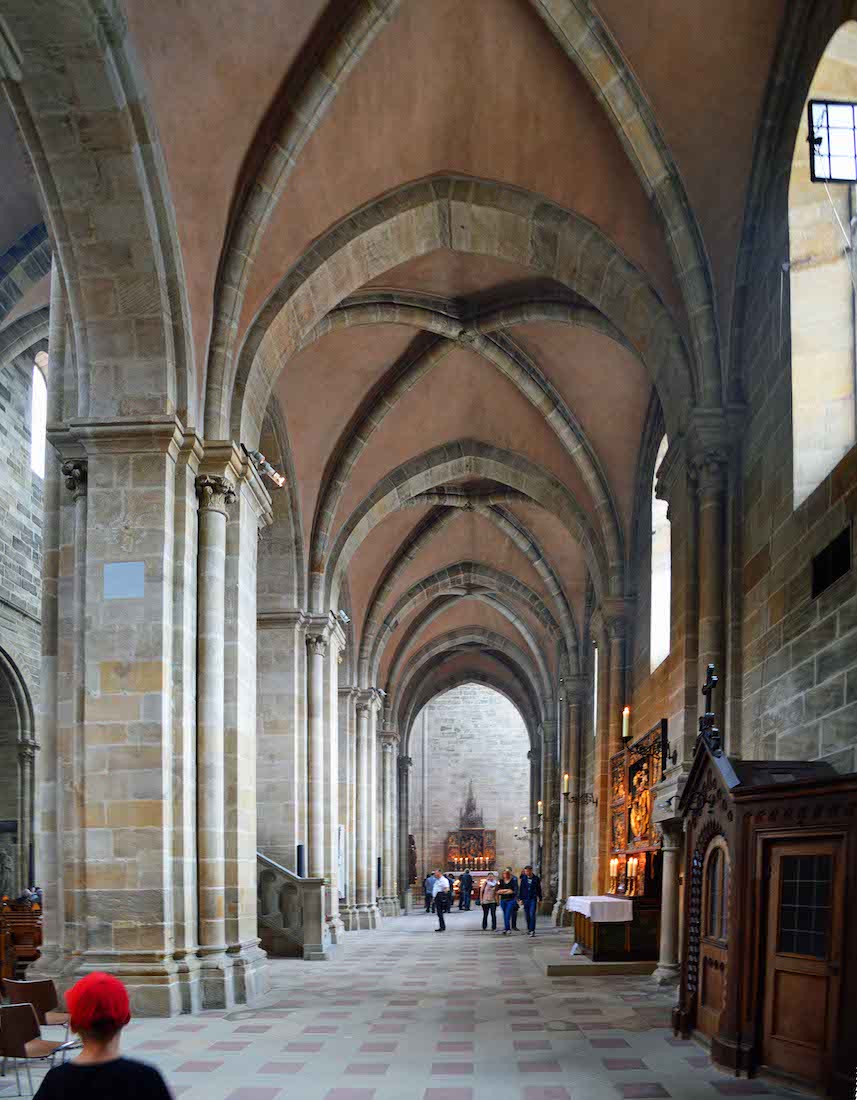
We are now standing at the junction where the nave runs into the West Choir. The stairs ahead to the left lead up to the pulpit, and there is an altar opposite. Another altar faces us in the distance, and there is in fact a third altar on the South wall close by it (where the candle brackets are). PLAN
23. ARCHBISHOP’S EFFIGY
The effigy is of Archbishop Friedrich Philipp von Abert. He was Archbishop of Bamberg from 1905 until his death in 1912.
24. MÜHLHAUSEN ALTAR
The Mühlhausen Altar came from a non-Catholic parish church in the town of Muehlhausen. At centre is the Madonna surrounded by angels. The altar wings show scenes from the life of St. Anne.
25. TRIPTYCH
This triptych displaying various historical and bad reminders of the past is on the South wall of the South transept.
26. MODEL
Below the tripych in the South transept is this model – perhaps a reconstruction of part of the Cathedral?
27. RIEMENSCHNEIDER ALTAR
We leave the South transept, and walk back up the South aisle. The so-called Riemenschneider Altar was assembled in 1926 from several previously unrelated pieces. The central figure is Henry as portrayed in an earlier sixteenth-century statue (ca. 1520 – 1525).
28. SOUTH AISLE
Looking back we see the Riemenschneider Altar, and several bishop effigies on the South wall.
29. KOLB EFFIGY
Joseph Otto Kolb was Archbishop of Bamberg from 1943 to 1955. In 1935 Kolb was appointed Titular Bishop of Velicia and simultaneously the auxiliary bishop in Bamberg. He took over the Office of Archbishop after the death of his predecessor. He founded the St. Joseph Foundation for Church social housing and headed the archdiocese during the period of National Socialism.
30. UNNAMED BISHOP
Continuing up the South aisle we come to this unnamed effigy – in all likelihood another archbishop of Bamberg.
31. KIRCHGATTENDORFER ALTAR
The Kirchgattendorfer altar has almost life-size sculptures of Mary in the Glory, flanked by Saint Catherine of Alexandria with a sword, and Saint Barbara with chalice and host. The insides of the wings are decorated with scenes from the life of Mary and the childhood of Jesus. The Kirchgattendorfer altar is no longer used for worship.
32. GEORGII CAROLI
We come next to this very fine memorial to Georgii Caroli. HIs details appear to be: Born in 1749, appointed Bishop of Würzburg in 1795, appointed joint Bishop of Bamberg in 1800, and died in 1808.
33. STOUP
There are several of these placed around the Cathedral: I assume they are stoups for holy water. Perhaps the cover is necessary with the large numbers of visitors.
34. THE BAMBERG RIDER
We cross now to the steps up to the Western choir. Ahead is a very special tomb, and at left is the Bamberg Rider, created between 1230 and 1235. Unfortunately the artist is unknown. We only know that he was the so-called ‘Riding Master’ who was asked to symbolise the virtuous noble medieval knight.
35. WHO IS THE RIDER?
The Rider is also unknown, but scholars presume that it is King Stephan of Hungary. The canopy indicates that the rider is a saint. As for the horse, it is interesting that this is one of the first portrayals of a horseshoe with nails. Notice the green man at bottom right.
36. GREEN MAN
A green man sculpture is a sculpture, or other representation of a face surrounded by or made from leaves. Branches or vines may sprout from the nose, mouth, nostrils or other parts of the face and these shoots may bear flowers or fruit. The green man is primarily interpreted as a symbol of rebirth, representing the cycle of growth each spring.
37. IMPERIAL TOMB
The tomb is where Henry and Kunigunde are buried. Henry was elected German King in 1002 and in 1014 he became Emperor of the Holy Roman Empire of the German Nation. Bamberg was the capital of this Empire during his reign. Henry died in 1024 at the age of 51, the Empress nine years later. The marriage of the two had been childless and Henry named the church as heir. The consecration of Henry followed in 1146, that of Kunigunde in 1200. The tomb was created between 1499 and 1513 by the Würzburg sculptor Tilman Riemenschneider.
38. WESTERN CHOIR (ST PETER’S)
Unfortunately, the St Peter’s Choir is not accessible to the public. The Choir is striking, first of all, because of the grand, gothic pews made by the carving family, Parler, that came from Prague. The early baroque crucifixion group in the distant altar is also prominent and was created by the artist Justus Glesker around 1650. During the ‘purification’ of the cathedral the work of art was removed from the church, but brought back later.
39. DOME OF ST PETER’S CHOIR
The end dome of the Choir is decorated with a fresco of the Risen Christ. Below are a sculpture and tomb of Pope Clement II. This Pope, originally known under the name ‘Suidger’, was the second Bishop of Bamberg from 1040 – 1046. In 1046 he was elected Pope and carried the name ‘Clement II’. He died in 1047 allegedly of a lead contamination. According to his wishes he was brought to Bamberg and buried in the cathedral. His grey tomb can just be seen at the end of the central aisle.
40. NORTH AISLE, WEST END
We descend from the Choir, and move across to the North aisle, by the main door. Various sculptures line the wall here.



